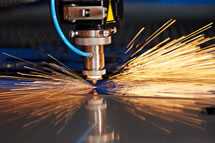Millions of dollars could be invested to allow university research to have a significant impact in ‘real life’
 It seems that Congress is trying to put money where its mouth is thanks to recent legislation that aims to provide millions of dollars to establish institutes for STEM innovation that would allow university research to develop into practical application, keeping innovation alive in the U.S. and not just overseas.
It seems that Congress is trying to put money where its mouth is thanks to recent legislation that aims to provide millions of dollars to establish institutes for STEM innovation that would allow university research to develop into practical application, keeping innovation alive in the U.S. and not just overseas.
The six Institutes for Manufacturing Innovation (IMIs), part of the National Network for Manufacturing Innovation (NNMI), began in a push by the Obama Administration to enhance U.S. innovation competitiveness by supporting development of STEM technologies that could help the country compete in the global marketplace.
NNMI would act as an industry/government co-funded public-private partnership and would eventually consist of up to 45 institutes connecting manufacturing and engineering businesses and universities in areas of industry that need a technology invigoration.
Of course, though the idea is great in theory, nothing in government grand-schemes to boost the U.S. economy is free—and that’s where the Revitalizing American Manufacturing Innovation (RAMI) Act of 2013 comes in.
(Next page: The bill; potential for the future)
RAMI (H.R. 2996 in the House of Representatives and S. 1468 in the Senate), as of last week (Sept. 15, 2014) has been passed by the House; and the Information Technology and Innovation Foundation (ITIF) is calling upon the Senate to pass the bill, too.
“The network would fill a key gap in the U.S. innovation ecosystem,” writes Robert Atkinson, president of ITIF. “Public investment in scientific research is vital, but government also has a critical role to play in co-investing alongside industry in applied (or ‘translational’) research whose intent is to ensure that the fruits of basic scientific research and technological discovery get translated into commercial products manufactured at scale in the United States.”
“Unfortunately, all too often, breakthrough scientific discoveries made in U.S. universities or corporate laboratories have ultimately been commercialized overseas,” he continued. “For example, the U.S. has been the ‘first mover’ and then lost virtually all market share in a wide range of material and product technologies, including semiconductor memory devices, flat panel LED displays, solar cells, lithium-ion batteries, and robotics.”
Atkinson also makes the case that as other countries are currently investing to support their own STEM research-applied innovations through industry/university partnerships, it’s in America’s competing interest to do the same. Atkinson notes the example of Germany and its investment of $2.5 billion annually in applied research.
In 2012 Japan also announced a $2 billion investment to promote university-industry collaboration, while the UK announced a similar $1.5 billion investment.
“The U.S. can no longer assume that federal investment in basic scientific research on the front end will one day surreptitiously turn into technologies and products that can be commercialized domestically,” explains Atkinson. “Rather, it needs to do more to accelerate U.S. advanced manufacturing by catalyzing the development of new technologies, production processes, and educational competencies.”
According to Stephen Ezell, senior analyst ITIF, though RAMI isn’t asking for billions, it is asking for $300 million over seven years for the Secretary of Commerce to establish several IMIs.
Already, four IMIs have already been created, including America Makes for additive manufacturing (i.e., 3D-printing) in Ohio; the Next Generation Power Electronics National Manufacturing Innovation Institute in North Carolina; the Digital Manufacturing & Design Innovation Institute (DMDII) at the University of Illinois; and the Lightweight & Modern Metals Manufacturing Innovation (LM3I) Institute in Michigan.
More on America Makes:
[field name=iframe2]
More on the North Carolina Institute:
[field name=iframe3]
More on the University of Illinois Institute:
[field name=iframe4]
More on the Michigan Institute:
[field name=iframe5]
“Full Congressional passage of the RAMI Act would authorize funding for the establishment of at least four additional Institutes of Manufacturing Innovation on a competitive, industry-led, and technology-neutral basis,” writes Ezell.
According to Govtrack.us, S. 1468 (RAMI in the Senate) only has a 25 percent chance of being enacted.
- 25 education trends for 2018 - January 1, 2018
- IT #1: 6 essential technologies on the higher ed horizon - December 27, 2017
- #3: 3 big ways today’s college students are different from just a decade ago - December 27, 2017
